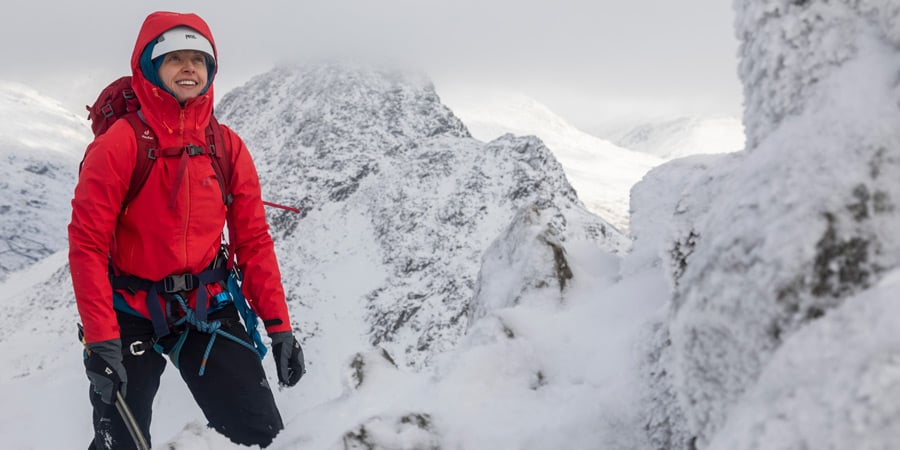DO
Before you travel
Follow the weather and avalanche conditions in the lead up to your trip – this will help you get your head into reading the forecast and thinking about what it means for you on your day in the hills. It also arms you with good information about the build-up of snow in the mountains to be able to make better decisions about your route choice when you get there.
See what others have been up to, so you can start to build a picture of the conditions. Bear in mind that few folks let on when they have had a rubbish day out and it’s hard to have a good story without a bit of embellishment! So take it all with a pinch of salt and remember that conditions can change very quickly in Scotland. But some information about where people have been having success and some photos to help build up your psyche is always useful information.
Keep yourself fit – some regular cardio exercise, plenty of hill walking and climbing wall action or look up a training programme specific to winter – Steve House has some good advice on how to train for winter in his book, Training for the New Alpinism.
Keep the psyche up – keep copies of your favourite books out, and read them. Scotland’s Winter Mountains with one Axe, Cold Climbs, Chasing the Ephemeral, Scottish Winter Climbs or Munros / Corbetts, whatever it is that inspires you to go to Scotland look at it and devour it to keep the desire to get there strong.
Before you go out
Pack lots of your favourite snacks – it's way easier to eat little and often than it is to try to eat your favourite baguette on a cold windy Scottish day. Think of food you can get at when you have your gloves on. And make sure you have a good breakfast before you head out.
Take a flask with a hot drink; Hot Vimto or Ribena with some ginger in is my favourite in winter – the ginger helps keep you a little warmer! Some people prefer water; it can help to put hot water in your water bottle at the start of a cold day to help reduce the chance of it freezing.
Check the weather forecast in the morning before you head out in case there have been any updates – the timings of any weather coming in could be particularly important to how you plan your day.
Read the avalanche forecast carefully, check the route to make sure you aren’t going to cross slopes that have been identified as dangerous.
Have all your stuff in the right place in your bag – are your goggles accessible? Can you get to your map and compass easily? What about head torch and do you have spare batteries? First aid kit? Whistle? Is your phone going to stay dry and charged?
When you are out
Have a questioning attitude…
Keep an eye on conditions on the drive to the car park and keep looking out for any changes you are not expecting through the day. For example, has the wind changed direction when it wasn’t forecast? Is the snow where you expect it to be?
On poor visibility days make the most of glimpses of visibility to see what is going on around you.
Don’t get hot and sweaty on the uphill walking part of the day – adjust clothing and walk at the right pace to manage this.
On a blustery day make sure your map and compass is accessible and tied to you. If you are climbing it is a good idea to work out your strategy to get off the route before you climb the last pitch – then when you get to the top you are not battling the elements whilst trying to get your goggles on and read the map.
When you get back from your day out
Get your kit drying, find a warm fire, eat a big meal and have something nice to drink – then start planning the next day …
Don’t
Don’t expect every day in Scotland to be amazing. Don’t give up on it though; with enough persistence you will have some of the best days in the mountains in Scotland in the winter…but also some of the worst.
Don’t forget your sense of humour – you’ll need to see the funny side when your massive fancy baguette gets blown out of your hand before you have chance to eat it.
Don’t forget your lunch or drink.
Don’t forget your gaiters – snow in the top of your boots will result in very cold feet.
Don’t leave your kit in your bag to fester at the end of the day, it just means that you’ll be damp the following day, and that's no one’s idea of fun.
About the author
Kath is a qualified Winter Mountaineering and Climbing Instructor and International Mountain Leader, and has spent the last 16 winters in Scotland teaching winter hill and mountain skills (and getting plenty of her own winter climbing done too). Find out more about her here.

